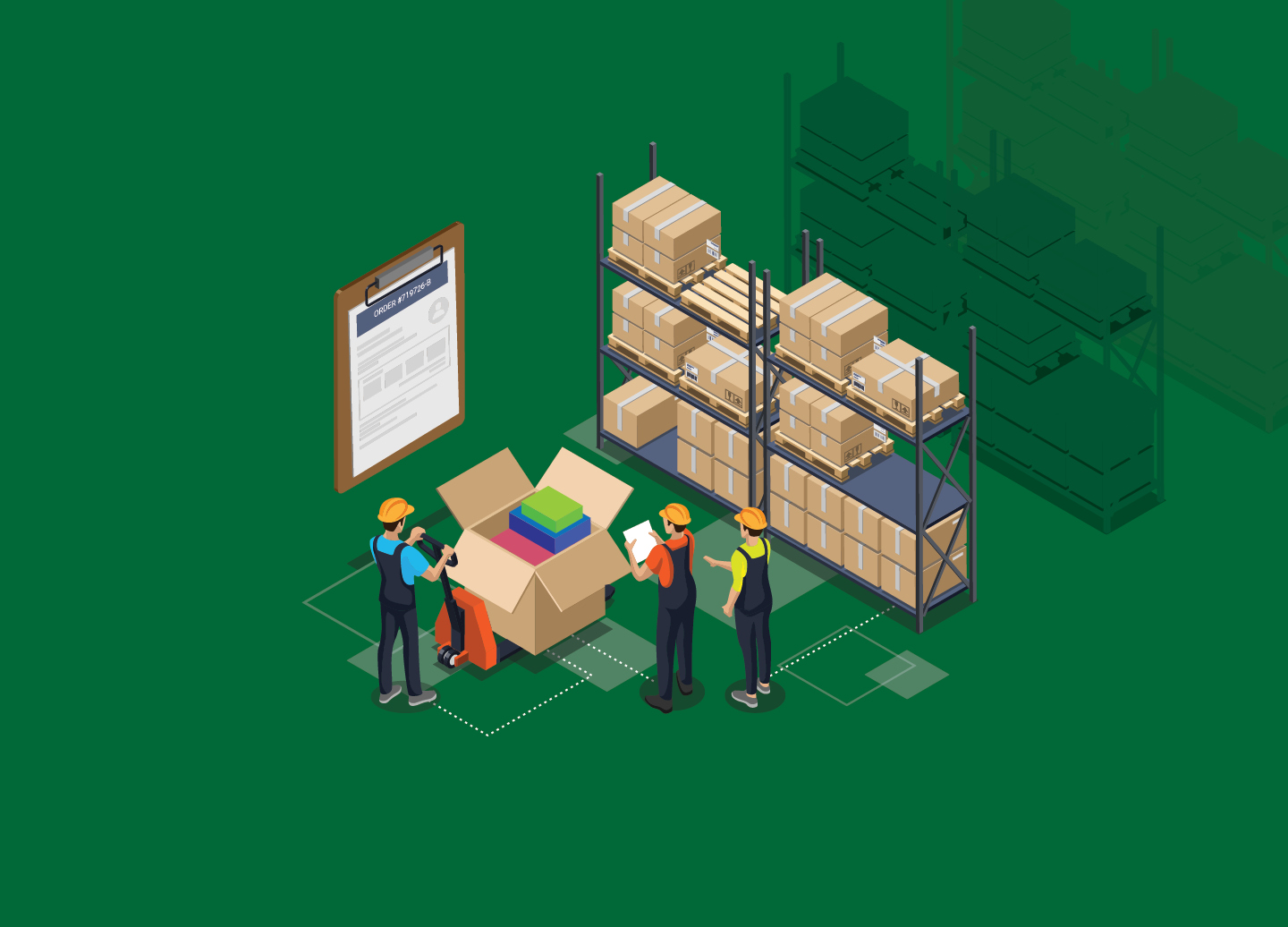Warehouse Efficiencies Explained: Pack and Cartonization

Discover the relationship between pack and cartonization and how parcel shipping software elevates both processes.
Anyone who has moved is familiar with the challenges that come with packing boxes – should this fragile lamp be packed in one box or two? Did I overfill this box and is it now too heavy to lift? For enterprise shippers, these questions are all addressed with several warehouse processes: pack and cartonization.
What is pack?
Pack is the physical process in which items for an order are placed into a carton or cartons in preparation for shipment by warehouse workers. This process is typically right after order receiving and order picking process and takes place in the warehouse. Part of this includes choosing the right materials and carton(s) to pack the product. It can also include weighing and labeling it, all characteristics of an efficient pick and pack.
This process is important because a proper process can ensure that items are not damaged during transit, which can lead to a poor Customer Experience (CX). In addition, an efficient packing process can produce additional operational cost-efficiencies within the business. This ties back to the CX again, with damaged goods typically leading to a return, exchange, or request for refund. An efficiently packed shipment will reduce the number of returns and exchanges to save the brand those additional expenses. Finally, the pack process includes an opportunity for promotional marketing with brand-identified packaging including the box and packing material.
What is cartonization?
Cartonization is an automated process, sometimes within a Warehouse Management System (WMS) or Order Management System (OMS) solution, that can help determine the best packaging for a shipment based on the size or dimensional weight (DIM) and other item(s) attributes in the order. This solution finds the optimal size of the carton for a shipment, as well as how many and which products should go into it to streamline decision-making and increase efficiencies.
Incorporating cartonization can help find additional packaging budget with more efficient packing and fewer packing materials used. In turn this can increase productivity and boost overall warehouse efficiency. Other benefits include increasing the speed of delivery to customers, a major part of the CX and a factor in maintaining strong and lasting customer relationships. Cartonization standardizes the process for the operations and ensures the right size cartons are being used for every order being shipped out the door, impacting the company’s bottom line in material and shipping costs while eliminating overspend.
The technical component of cartonization relies on advanced algorithms to analyze three main factors to determine the proper size and number of cartons for a shipment. These factors include the material and shape of the product, size, and the nature of each product.
How multi-carrier shipping software can boost pack and cartonization success
In today’s busy age of e-commerce, many brands are implementing an omnichannel fulfillment strategy. This strategy utilizes all fulfillment locations (stores, distribution centers (DC), and third-party logistics (3PL) facilities) to offer shorter transit times, due to inventory that is closer to the customer, and more cost-efficient shipping rates. The complications for this strategy come when you are forced to manage and keep track of the packaging and shipping practices individually for each fulfillment location, ensuring every DC in your e-commerce business network follows these strict guidelines before shipping an order.
While multi-carrier shipping software can prepare carrier compliant documentation and shipping labels without these processes, shippers often request a solution that has pack and cartonization functionalities if they don’t already have a WMS software in place. Pack functionality can be accommodated by shipping solutions like ProShip or WorldLink. But cartonization, however, is somewhat of a newer concept which has become more in-demand due to shipping carriers being more aggressive with their DIM pricing factors and shippers focused on reducing costs when possible. Because larger and heavier packages will cost more due to how much space a package takes up in a vehicle, finding the optimum package size is critical. With advanced multi-carrier shipping solutions, business rules can be generated to find the shipping method with the shortest time in transit and lowest cost based on the size of the box (or boxes) in the shipment to still get the best rate avoiding additional DIM charges.
From a software standpoint, it is best practice to validate items for packing and track items to carton upstream, to optimize early in the fulfillment process which executes streamlined operations further down the line.
When you combine a flexible multi-carrier shipping solution with these automated processes, several productivity advancements can be found: warehouse decision-making is streamlined and standardized, and validation and tracking processes can help increase operational efficiency, while eliminating overspend and mitigating risk for supply chain processes.
Contact the experts at ProShip multi-carrier shipping software to learn more about partnering with the top shipping solution for 30% of the NRF Top 100 retailers.

Mike Stoessel is an experienced Enterprise Sales Executive at ProShip with a strong history of working in the software industry. He’s been in the supply chain information technology space for over 20 years as a dedicated proponent of shipping and logistics solutions.